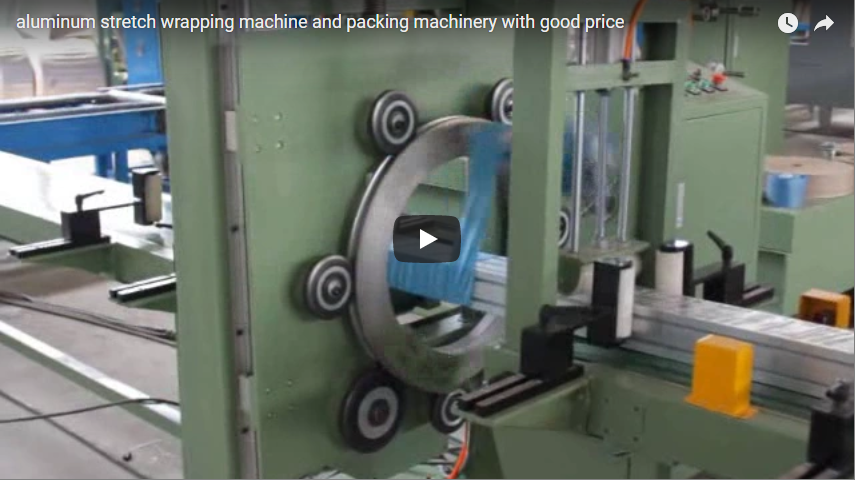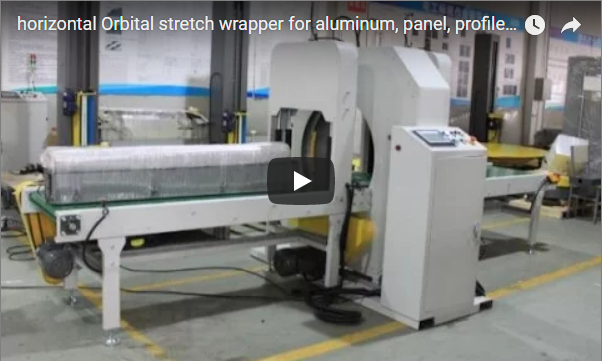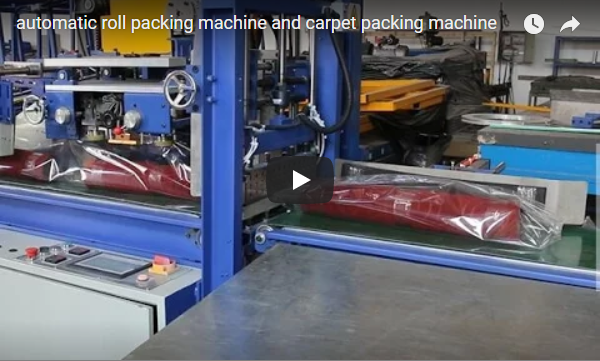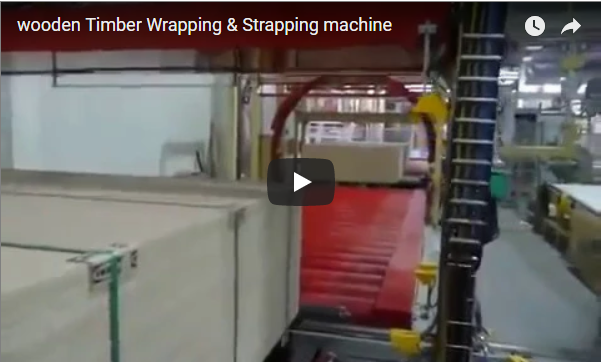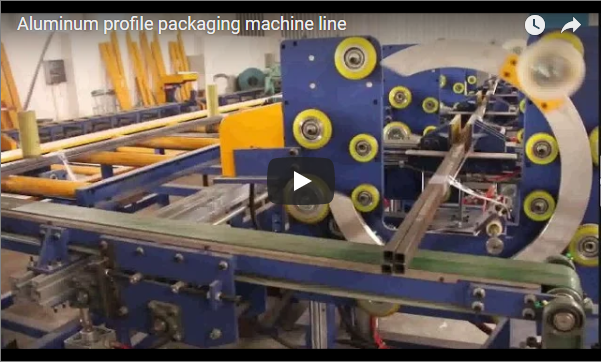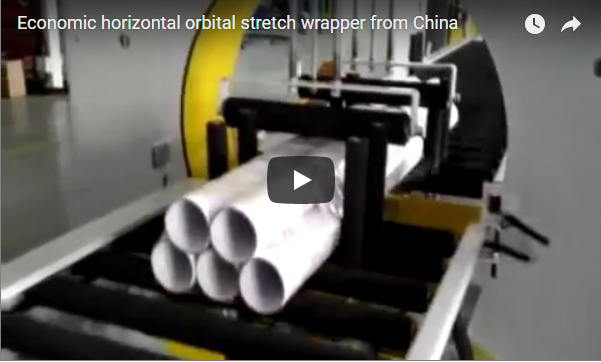Unlock Efficiency and Protection: A Deep Dive into Orbital Stretch Wrappers for Rolls, Bars, and Rods
In the dynamic world of manufacturing and logistics, ensuring the safe, secure, and efficient transit of long, bulky, or cylindrical items like rolls, bars, and rods presents a unique set of challenges. Traditional packaging methods often fall short, leading to potential damage, increased labor costs, and compromised product integrity. Enter the orbital stretch wrapper, a specialized automated packaging solution designed specifically for these demanding applications.
This isn't just about wrapping; it's about safeguarding your assets and streamlining your operations. Let's delve into how this technology works and the significant advantages it brings.
1. Understanding the Orbital Stretch Wrapper: Beyond the Basics
At its core, an orbital stretch wrapper, often referred to as a horizontal stretch wrapper, is engineered to apply stretch film around the entire circumference of elongated products as they pass horizontally through the machine. Unlike traditional turntable wrappers where the load rotates, here, the product moves linearly while a ring carrying the stretch film roll orbits around it.
How it Works:
- The product (e.g., a steel bar, a roll of fabric, aluminum profiles) is fed onto the machine's conveyor system.
- As it enters the wrapping zone, a vertical rotating ring holding a roll of stretch film begins to orbit around the product.
- The film dispensing system on the ring applies the stretch film securely and uniformly along the length of the product.
- Once wrapped, the product exits the machine, ready for storage or shipment.
This mechanism allows for continuous wrapping of products of virtually any length, making it ideal for items that are impractical to wrap on standard pallet wrappers.
2. Why Choose Orbital Wrapping? Key Advantages for Your Operations
Investing in an orbital stretch wrapper translates into tangible benefits across your supply chain:
- Superior Product Protection: The tight, multi-layered wrap cocoons the product, offering robust protection against scratches, dust, moisture, and other environmental factors during handling and transportation. This is crucial for maintaining the quality of sensitive materials like finished metals or textiles.
- Enhanced Load Stability: For bundled items like pipes or lumber, orbital wrapping creates a tight, secure unit, preventing shifting, loosening, or individual pieces falling out, significantly improving safety and handling efficiency.
- Increased Throughput & Efficiency: Automating the wrapping process dramatically reduces manual labor requirements and speeds up packaging cycle times compared to manual wrapping or less specialized methods.
- Optimized Material Usage: Modern orbital wrappers often feature powered pre-stretch systems (stretching the film before application), maximizing film yield, reducing packaging costs, and ensuring consistent wrap tension.
- Versatility: These machines can often be customized or adjusted to handle a wide range of product diameters, cross-sections (round, square, irregular), and lengths.
- Professional Presentation: A neatly wrapped product conveys quality and professionalism to the end customer.
3. Technical Deep Dive: Specifications That Matter
When evaluating an orbital stretch wrapper, consider these key technical parameters:
- Ring Diameter: Determines the maximum cross-sectional dimension (height/width) of the product that can be wrapped (e.g., 400mm, 700mm, 1200mm, etc.).
- Ring Speed (RPM): Impacts the wrapping speed and overall throughput (e.g., 50-150 RPM).
- Conveyor System: Type (belt, roller), speed (variable), width, and load capacity are critical for product handling.
- Film Carriage System: Pre-stretch ratio (e.g., up to 250-300%), type (mechanical brake, powered), and film width/roll diameter compatibility.
- Control System: PLC controls, HMI interface for ease of operation, customizable wrapping programs (e.g., number of wraps, overlap).
- Cutting and Clamping System: Automated film cutting and clamping mechanisms for seamless operation start/end cycles.
- Power Requirements: Voltage, phase, and power consumption.
- Safety Features: Emergency stops, safety guarding, light curtains.
Note: Specific parameters vary significantly based on the model and manufacturer.
4. Real-World Applications: Where Orbital Wrappers Shine
The unique capabilities of orbital stretch wrappers make them indispensable in various industries:
- Metals Industry: Wrapping pipes, tubes, bars (steel, aluminum, copper), coils, and extrusions.
- Plastics Industry: Securing plastic pipes, profiles, conduits, and sheets.
- Woodworking & Lumber: Bundling timber, mouldings, flooring planks, and panels.
- Textile Industry: Protecting rolls of fabric, carpets, and nonwovens.
- Construction: Wrapping rebar, insulation panels, and other long building materials.
- Automotive: Packaging exhaust pipes, axles, and other long components.
5. From My Experience: Tips for Maximizing Your Orbital Wrapper Investment
Having worked alongside these machines, I've learned that maximizing their potential goes beyond the initial setup:
- Film Selection is Crucial: Don't just use any stretch film. Consider the gauge (thickness), tack (cling), UV resistance (if stored outdoors), and pre-stretch capabilities matched to your machine and product. Testing different films can yield significant savings and better protection.
- Preventative Maintenance Pays Off: Regularly inspect and clean film rollers, sensors, and cutting mechanisms. Follow the manufacturer's lubrication schedule. A well-maintained machine runs reliably and extends its lifespan.
- Operator Training is Key: Ensure operators understand proper loading procedures, program selection, film roll changes, and basic troubleshooting. This minimizes downtime and prevents wrap failures.
- Integration Matters: Consider how the wrapper fits into your overall production flow. Smooth infeed and outfeed integration (potentially with automated loading/unloading) maximizes efficiency gains.
6. Making the Right Choice: Final Considerations
Choosing the right orbital stretch wrapper involves assessing:
- Product Specifications: Minimum and maximum dimensions (length, cross-section) and weight.
- Throughput Needs: How many items per hour/shift need wrapping?
- Operating Environment: Space constraints, temperature, dust levels.
- Automation Level: Semi-automatic vs. fully automatic operation.
- Budget & ROI: Calculate the return on investment based on labor savings, material reduction, and damage prevention.
Conclusion: Wrapping Up Value
The orbital stretch wrapper is more than just a packaging machine; it's a strategic asset for businesses dealing with long or cylindrical products. By providing superior protection, enhancing load security, boosting operational efficiency, and reducing material costs, it directly contributes to a healthier bottom line and improved customer satisfaction. Whether you're in metals, plastics, wood, or textiles, exploring orbital wrapping technology could be the key to unlocking significant improvements in your packaging operations.
Ready to elevate your packaging process? Explore horizontal wrapping machine options tailored to your needs.
https://www.fhopepack.com/Horizontal_wrapping_machine.html
For specific inquiries or consultation, feel free to reach out: info@fhopepack.com

